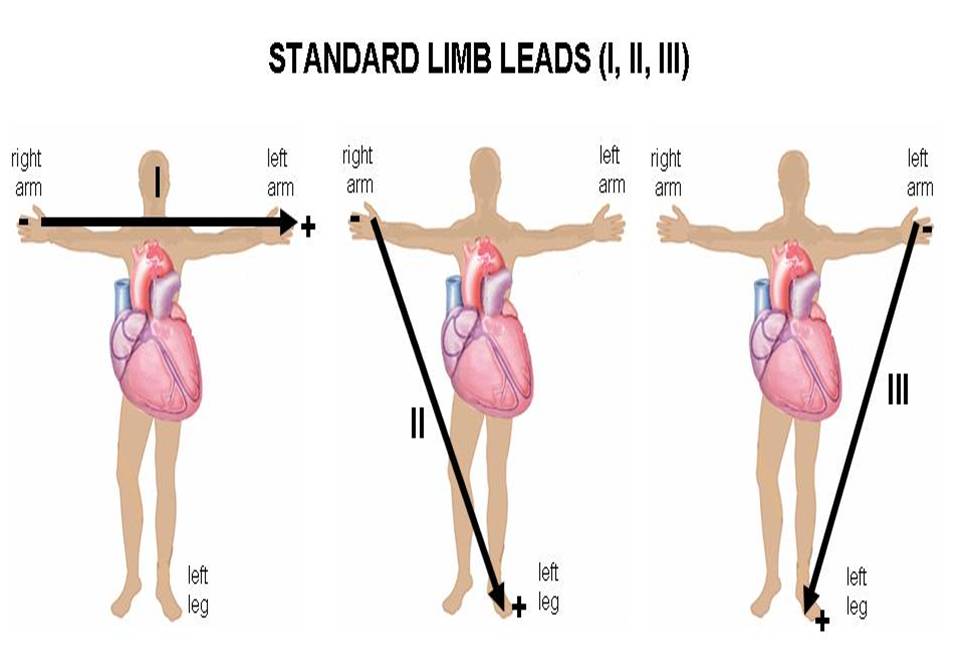P waves in leads II and V1.
- If the P in lead II is greater than 2.5 mV (small boxes) right atrial enlargement (RAE) probably exists.
- If the P wave in V1 is negative or biphasic, then LAE probably exists.
- This negative portion of the P wave in V1 should be more than 1 box wide and 1 box down to be considered significant.
- PR depression. The only classic significant PR segment abnormality that is encountered in the emergency department is PR depression. This is most often seen in the setting of pericarditis. Since there are multiple stages of pericarditis, these depressions are not always seen when this disease is present.
- QRS width:
- QRS >3ss (0.12 sec) = BBB
- QRS shape:
- RBBB --- RSR' = rabbit ears = The “R” from Right and Rabbit = right BBB (RBBB) there should be an RSR’ in leads V1, V2 or V3.
- LBBB --- a left BBB (LBBB) you need a deep, wide Q/S wave in these anterior leads. This you will just have to memorize.
- QRS height:
- LVH --- left ventricular hypertrophy (LVH)
- A positive deflection in leads I or aVL greater than 11 mV. Mnemonics: 1 and L look like an 11 when they are side by side.
- A value greater than 35 mV when you add the absolute values of the more negative of V1 or V2 plus the more positive of V5 or V6. Mnemonics: just have to look at the Q or S in leads V1 and V2 and see which is more negative. Take the absolute size of that complex and add it to the larger R of V5 or V6.
- Remember, only one criterion is sufficient to diagnose LVH.
- ST segments:
- you need to check systematically through all 12 leads of the EKG looking for ST elevations or depressions. These findings are consistent with AMI or ischemia respectively.
- T wave:
- Specifically, you are looking for flipped T waves that are pointing in the negative direction. This is also symbolic of coronary ischemia.
- Quickly glance at the shape of the T waves. If they are sharp and pointy instead of nicely rounded, hyperkalemia may exist.








Post a Comment